How to Maintain a Healthy Posture While Sewing
Sewing is not just a hobby; it’s an art form that requires focus, creativity, and, most importantly, the right posture. If you've ever spent hours hunched over your sewing machine, you know the discomfort that can follow. That’s why it’s essential to learn how to maintain a healthy posture while sewing. Not only does good posture help you avoid aches and pains, but it also enhances your sewing experience, allowing you to create with ease and comfort. Think of your body as a finely tuned machine; when every part is aligned, it operates smoothly. So, let’s dive into the essential tips and techniques that will ensure your sewing sessions are as enjoyable as they are productive!
Understanding the significance of maintaining good posture while sewing can prevent long-term health issues. Good posture isn’t just about looking poised; it’s about aligning your body in a way that minimizes strain on your muscles and joints. When you sit or stand correctly, you reduce the risk of developing chronic pain, especially in your back, neck, and shoulders. Imagine trying to sew a beautiful quilt while your back is screaming in agony—definitely not ideal! By focusing on proper alignment, you can enhance your overall well-being during those long sewing marathons. Plus, good posture can improve your concentration and creativity, making for a more enjoyable sewing experience.
A well-organized sewing area is crucial for maintaining good posture. Think of your workspace as your creative sanctuary; it should be designed to support you as you work. The height of your table, the type of chair you use, and even the placement of your tools can have a significant impact on your posture. For instance, if your sewing machine is too low, you might find yourself leaning forward, which can lead to discomfort over time. By creating an ergonomic sewing environment, you can ensure that everything is within reach, allowing you to keep your body in a neutral position. Here are some key aspects to consider:
- Table Height: Your sewing table should be at elbow height when you’re sitting comfortably.
- Chair Selection: Choose a chair that offers good lumbar support and is adjustable.
- Tools Placement: Keep your scissors, pins, and other essentials within easy reach to avoid unnecessary stretching.
Selecting an appropriate chair can greatly influence your posture. The right chair is like a good pair of shoes—it can make all the difference. Look for chairs that offer adjustable height, back support, and comfortable cushioning. A chair that allows you to sit with your feet flat on the ground and your knees at a 90-degree angle will help you maintain a healthy posture. It’s essential to test out different types of chairs to find one that feels just right for you. Remember, comfort is key!
Adjustable chairs offer customizable support, allowing you to find the perfect height and angle. These chairs are designed to adapt to your body’s unique shape and size, making them ideal for long sewing sessions. You can easily modify the height of the seat and the angle of the backrest to suit your needs. This flexibility helps you maintain a neutral spine position, reducing strain on your back and neck. When adjusting your chair, ensure that your elbows stay close to your body and your wrists remain straight while sewing.
Incorporating supportive cushions can enhance comfort and posture. If your chair lacks adequate lumbar support, consider using a cushion specifically designed for that purpose. These cushions can help maintain the natural curve of your spine and alleviate pressure points. Look for cushions made from memory foam or gel, as they can provide additional comfort during those lengthy sewing projects. By investing in a good cushion, you’ll find that you can sew for hours without feeling the usual fatigue.
Adopting the right sewing techniques can significantly improve posture. It’s not just about having the right equipment; it’s also about how you use it. Pay attention to your hand positioning and body alignment while sewing. Keep your shoulders relaxed and avoid hunching over your machine. Instead, sit up straight and bring the fabric to you rather than leaning forward. This small adjustment can make a world of difference in how your body feels after a sewing session. Additionally, practice moving your arms and hands in a way that feels natural and doesn’t strain your muscles.
Regular stretching and taking breaks are vital for maintaining healthy posture. It’s easy to get lost in the rhythm of sewing, but your body needs time to reset. Incorporating short breaks into your sewing routine can help prevent stiffness and fatigue. Think of it as giving your body a little tune-up. During these breaks, stand up, stretch, and walk around for a few minutes. This practice not only helps your muscles relax but also keeps your mind sharp and focused.
Engaging in simple stretching exercises can relieve tension and improve flexibility. Here are a few effective stretches specifically designed for sewists:
- Neck Stretch: Gently tilt your head to one side, holding for 15-30 seconds, then switch sides.
- Shoulder Rolls: Roll your shoulders forward and backward in a circular motion to relieve tension.
- Wrist Stretch: Extend one arm in front of you, palm up, and gently pull back on your fingers with the opposite hand.
Establishing a break schedule can help maintain focus and prevent fatigue. Consider using a timer to remind yourself to take breaks every 30 to 60 minutes. During these breaks, step away from your sewing machine and engage in a different activity, whether it’s stretching, grabbing a drink, or simply resting your eyes. This practice not only helps your body recover but also allows your mind to recharge, making you more productive when you return to your sewing project.
Q: How often should I take breaks while sewing?
A: It’s recommended to take a break every 30 to 60 minutes. This helps prevent stiffness and fatigue.
Q: What type of chair is best for sewing?
A: An adjustable chair with good lumbar support is ideal. It allows you to customize your seating position for maximum comfort.
Q: Are there specific exercises I should do for better posture while sewing?
A: Yes! Simple neck stretches, shoulder rolls, and wrist stretches can help alleviate tension and improve flexibility.
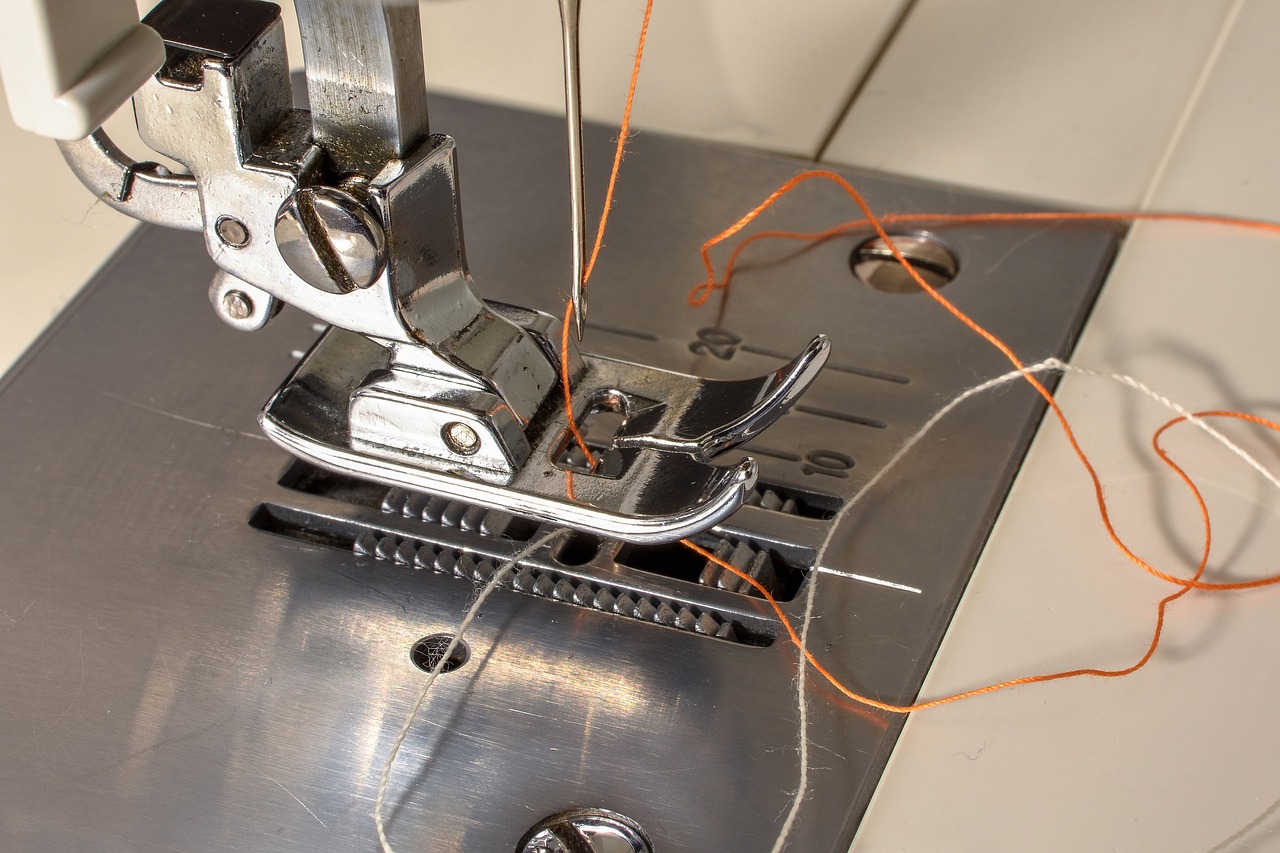
Importance of Good Posture
Maintaining good posture while sewing is not just about looking poised; it plays a crucial role in your overall health and well-being. When you sit properly, your body aligns itself in a way that minimizes strain on muscles and joints. This alignment is essential because poor posture can lead to a myriad of issues, including chronic pain, fatigue, and even long-term musculoskeletal disorders. Think of your body as a finely tuned machine; when all parts are in harmony, it operates smoothly. However, when one part is out of alignment, it can throw everything off balance.
Good posture enhances your ability to sew for extended periods without discomfort. When you're hunched over or slouched, you may find yourself taking more breaks, which disrupts your flow and creativity. On the flip side, when you're sitting up straight with your shoulders back, you can focus on your craft without constantly adjusting your position. This focus not only improves your productivity but also allows for a more enjoyable sewing experience.
Moreover, the benefits of good posture extend beyond the sewing machine. Here are some key advantages to consider:
- Reduced Pain: Proper alignment reduces the risk of neck, back, and shoulder pain.
- Enhanced Circulation: Good posture promotes better blood flow, which can enhance your energy levels.
- Improved Breathing: Sitting up straight allows for deeper breaths, which can help keep you calm and focused.
- Boosted Confidence: Good posture can improve your self-esteem and make you feel more confident in your sewing abilities.
In summary, good posture while sewing is not merely a matter of aesthetics; it is a fundamental aspect of maintaining your health and enhancing your sewing experience. By prioritizing your posture, you're investing in your well-being, allowing you to enjoy your craft for years to come. So, the next time you sit down at your sewing machine, take a moment to check your posture. Your body will thank you!
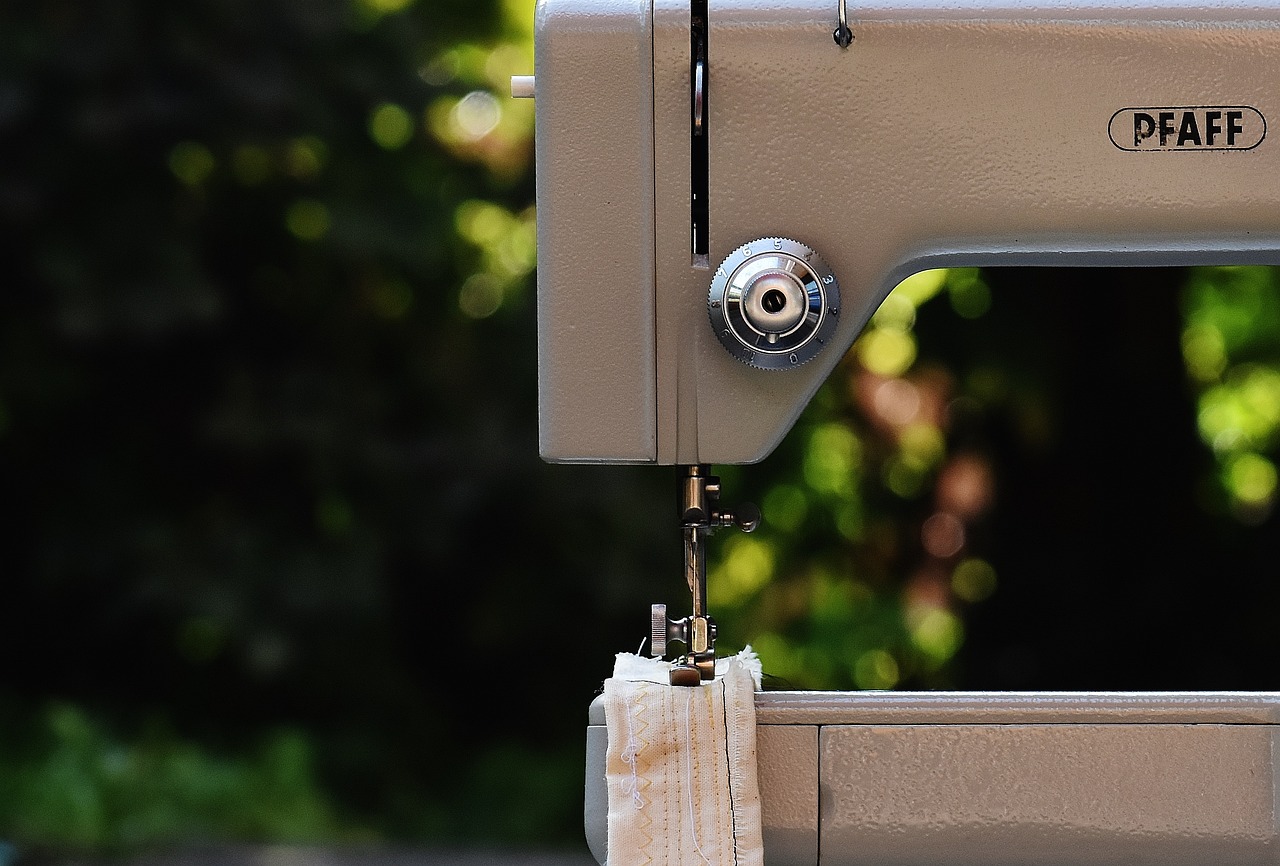
Setting Up Your Workspace
Creating an ergonomic workspace is essential for maintaining good posture while sewing. Imagine this: you’re settling in for a long sewing session, excited to create your next masterpiece. But if your workspace isn’t set up properly, that excitement can quickly turn into discomfort and strain. A well-organized sewing area not only enhances your creativity but also plays a crucial role in your overall well-being. So, let’s dive into the key elements that will help you create a comfortable and supportive sewing environment.
First things first, let's talk about table height. The height of your sewing table should align with your elbows when you’re seated comfortably. If the table is too high, you may find yourself hunching over, which can lead to back pain and neck strain. Conversely, if it’s too low, you might end up slouching, which is just as bad. A good rule of thumb is to adjust your table so that your forearms are parallel to the ground when you’re sewing. If you’re using a sewing machine, make sure it’s at the same height as the table to avoid awkward angles.
Next, let’s discuss chair selection. Your chair is your throne during those long hours of sewing, so it’s important to choose wisely. Look for a chair that offers good lumbar support, as this will help maintain the natural curve of your spine. An adjustable chair is ideal because it allows you to customize the height and angle to suit your needs. When you sit down, your feet should rest flat on the ground, and your knees should be at a 90-degree angle. If your chair doesn’t allow for this, consider using a footrest to achieve the perfect position.
Another crucial aspect of setting up your workspace is tools placement. Keep frequently used items within arm’s reach to minimize unnecessary stretching and straining. Organize your sewing supplies, such as scissors, threads, and pins, in a way that makes them easily accessible. You might even consider using a small caddy or a rolling cart to keep everything organized and mobile. This way, you can avoid awkward movements that could lead to discomfort.
To give you a clearer picture, here’s a simple table summarizing the key components of an ergonomic sewing workspace:
| Component | Ideal Setup |
|---|---|
| Table Height | Elbows at 90 degrees when seated |
| Chair | Adjustable with good lumbar support |
| Foot Position | Feet flat on the ground or on a footrest |
| Tools Placement | Within arm's reach to avoid stretching |
In conclusion, taking the time to set up your sewing workspace correctly can make a world of difference in your sewing experience. By ensuring that your table height, chair selection, and tools placement are all optimized for comfort, you’ll not only enhance your posture but also enjoy your sewing projects to the fullest. Remember, a little attention to your environment goes a long way in preventing discomfort and promoting creativity!

Choosing the Right Chair
When it comes to sewing, the chair you choose can make a world of difference in your overall comfort and posture. Imagine trying to create a masterpiece while sitting on a chair that feels like a rock; not only would it be uncomfortable, but it could also lead to a myriad of aches and pains. Therefore, selecting the right chair is not just about aesthetic appeal—it's about ensuring that your body is well-supported during those long creative sessions.
First and foremost, look for a chair that offers good lumbar support. This means it should have a contour that supports the natural curve of your lower back. Without this support, you might find yourself slouching, which can lead to discomfort and even long-term health issues. Many chairs come with adjustable lumbar support, allowing you to customize it to fit your body perfectly. A chair that fits you like a glove can be your best friend, keeping fatigue at bay while you sew.
Next, consider the height of the chair. It should be adjustable to accommodate your sewing table. If your chair is too high or too low, it can lead to poor posture, as you may have to strain your neck or shoulders to reach your sewing machine. Ideally, your feet should rest flat on the ground, with your knees at a 90-degree angle. This alignment helps in maintaining a healthy posture and reduces strain on your back and legs. Here’s a quick checklist of features to look for:
- Height Adjustment: Ensure the chair can be easily adjusted to fit your table height.
- Swivel Base: A chair that swivels can help you reach tools and materials without straining.
- Armrests: Look for chairs with adjustable armrests to support your arms while sewing.
- Material: Choose breathable fabric to keep you comfortable during long sessions.
Another important factor is the chair's mobility. If you frequently move around your sewing area, a chair with wheels can be a game-changer. It allows you to glide effortlessly from one side of your workspace to the other without the need to stand up constantly. However, make sure the wheels are suitable for your flooring to avoid any unwanted slips or scratches.
Lastly, don’t underestimate the power of personal comfort. Everyone's body is different, so what works for someone else might not work for you. If possible, try out different chairs before making a decision. Sit in them, adjust the settings, and see how they feel. A chair that feels great to you will encourage longer sewing sessions without the nagging discomfort that can come from poor posture.
In summary, choosing the right chair involves considering lumbar support, height adjustability, mobility, and personal comfort. Investing time in finding the right chair can lead to a more enjoyable and productive sewing experience, allowing you to focus on your creativity rather than your discomfort. Remember, a well-chosen chair is not just a piece of furniture; it's an essential part of your sewing journey!
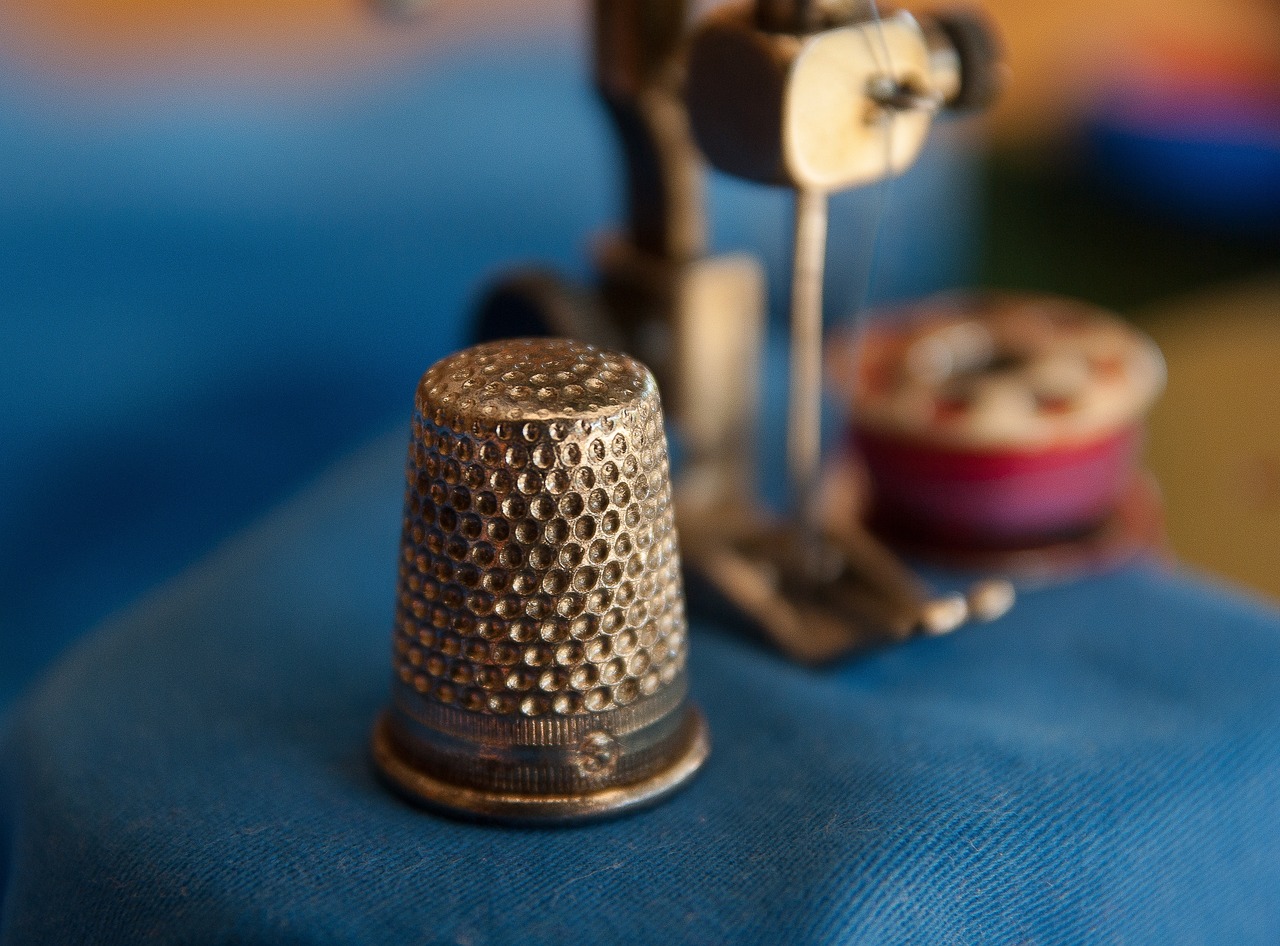
Adjustable Chairs
When it comes to maintaining a healthy posture while sewing, can be your best friend. Imagine this: you're deeply engrossed in your latest sewing project, the fabric is flowing beautifully, and your creativity is at its peak. But then, you start to feel that familiar ache in your back. This is where the right chair can make all the difference! An adjustable chair allows you to customize the height and angle to suit your body perfectly, which is essential for long hours of sewing.
One of the primary benefits of an adjustable chair is that it promotes proper alignment. When your chair is set to the right height, your feet should rest flat on the ground, and your knees should be at a 90-degree angle. This positioning not only supports your back but also encourages better blood circulation. If your chair is too high or too low, you might find yourself slouching or leaning forward, which can lead to discomfort and long-term health issues.
Here are some features to look for in an adjustable chair:
- Height Adjustment: Ensure that you can easily change the height of your chair to match your sewing table.
- Back Support: Look for chairs with lumbar support that can be adjusted to fit the curve of your lower back.
- Armrests: Adjustable armrests can help reduce strain on your shoulders and neck.
- Swivel Base: A chair that swivels allows you to reach your sewing tools without straining your body.
When you find the right adjustable chair, don't forget to experiment with the settings. Adjust the height so that your elbows are at a comfortable level when working on your sewing machine. The backrest should support your spine while allowing you to sit up straight without forcing your posture. Remember, the goal is to create a comfortable and supportive environment that allows you to focus on your craft without the distraction of discomfort.
In summary, investing in an adjustable chair is not just about comfort; it's about enhancing your sewing experience and protecting your health. By taking the time to choose the right chair and adjusting it to fit your needs, you can sew for hours without the nagging discomfort that often comes with poor posture. So, go ahead and make that investment—your back will thank you later!
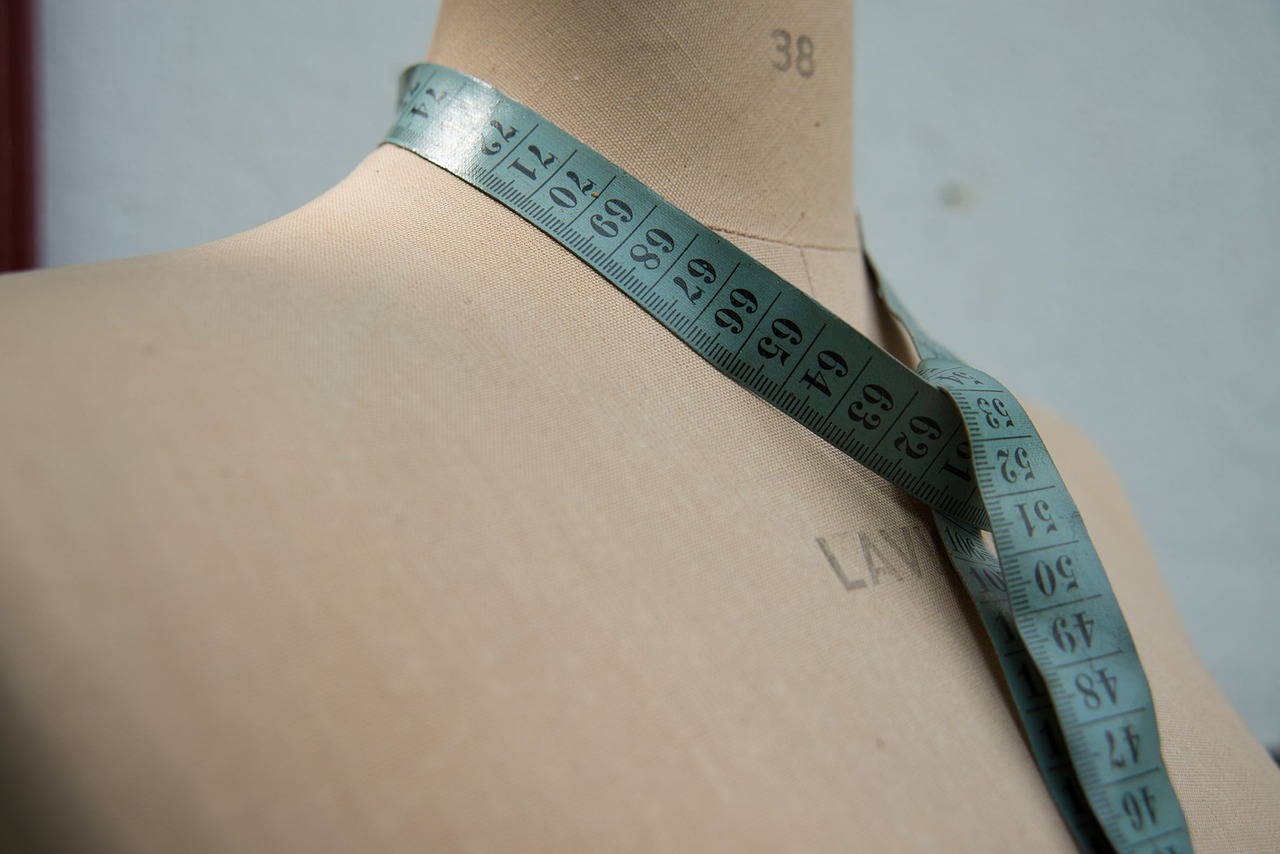
Supportive Cushions
When it comes to sewing for extended periods, comfort is key, and can make a world of difference. Think of them as your trusty sidekick in the battle against discomfort and fatigue. These cushions are designed to provide extra support to your lower back, promoting proper alignment and reducing the strain that can accumulate during long sewing sessions. Imagine sitting down to sew, and instead of feeling that nagging ache in your back, you feel cradled and supported. Sounds great, right?
There are various types of supportive cushions available, each with unique features that cater to different needs. Here are a few popular options:
- Lumbar Support Cushions: These are specifically designed to fit the curve of your lower back, offering targeted support. They help maintain the natural curve of your spine, which is essential for good posture.
- Memory Foam Cushions: Known for their ability to conform to your body shape, memory foam cushions provide personalized comfort and support. They can relieve pressure points, making them a popular choice for many sewists.
- Gel Cushions: If you're looking for something that keeps you cool while you sew, gel cushions are a fantastic option. They offer excellent support and help dissipate heat, preventing discomfort from prolonged sitting.
Choosing the right cushion can be a game-changer. It’s like finding that perfect pair of shoes that fit just right. You know, the ones that make you feel as if you could walk for miles without a single blister? Supportive cushions can do the same for your sewing experience. When selecting a cushion, consider factors such as your chair's height, the cushion's thickness, and whether it has adjustable features. You want something that complements your chair and aligns with your body’s unique shape.
Moreover, using cushions in conjunction with proper chair height can amplify their benefits. For instance, if your chair is too low, even the best cushion won't provide the support you need. It's all about creating that perfect ergonomic setup. So, don’t just toss any old cushion onto your chair; take the time to find one that works harmoniously with your entire sewing environment.
Incorporating supportive cushions into your sewing routine is not just about comfort; it’s about investing in your health. The more you care for your body while indulging in your sewing passion, the more enjoyable and productive your sessions will be. So, next time you sit down to sew, remember that a little cushion can go a long way in keeping you comfortable and focused on your creative projects!
Q: How do I choose the right supportive cushion for sewing?
A: Consider your chair height, the thickness of the cushion, and specific needs like lumbar support. Trying out different types can help you find the best fit.
Q: Can supportive cushions really make a difference?
A: Absolutely! They can significantly reduce discomfort and strain, allowing you to sew for longer periods without pain.
Q: How often should I replace my supportive cushion?
A: It's best to replace your cushion every 1-2 years or sooner if you notice a decline in support or comfort.
Q: Are gel cushions better than memory foam?
A: It depends on personal preference. Gel cushions are cooler, while memory foam offers personalized support. Try both to see which you prefer!

Proper Sewing Techniques
When it comes to sewing, the way you position your body and hands can make a world of difference in how comfortable and effective your sewing sessions are. are not just about the mechanics of stitching fabric together; they also encompass how you hold your body and tools. Imagine your body as a finely-tuned machine; if one part is out of alignment, the whole system can suffer. So, let's dive into some essential practices that can help you maintain a healthy posture while you sew.
First off, let’s talk about hand positioning. Your hands should be relaxed and positioned comfortably on the machine. Avoid reaching too far or twisting your wrists at awkward angles. Instead, try to keep your elbows close to your body and your wrists straight. This not only helps prevent strain but also allows for better control over your sewing. Think of your hands as the conductor of an orchestra; they need to move gracefully and effortlessly to create beautiful music— or in this case, beautiful seams!
Next up is body alignment. It’s essential to keep your back straight and your shoulders relaxed. A slouched posture can lead to discomfort and even long-term issues like back pain. When you sit down to sew, imagine there’s a string pulling you up from the crown of your head. This mental image can help you maintain a straight spine and an open chest. Additionally, your feet should be flat on the floor or on a footrest, ensuring that your legs are at a comfortable 90-degree angle. This alignment will help distribute your weight evenly and reduce fatigue.
Now, let’s not forget about movement strategies. It’s easy to get caught up in sewing and forget to move, but staying stationary for too long can lead to stiffness. Incorporating small, intentional movements can make a big difference. For instance, when you need to reach for tools or fabric, try to pivot your whole body instead of just stretching your arms. This way, you’ll engage your core and keep your posture intact. Think of it like dancing; you want to move fluidly and gracefully, not like a robot with stiff joints.
In addition to these techniques, consider keeping your workspace organized. A clutter-free area allows you to access your tools without straining your body. Place frequently used items within arm's reach so you don’t have to twist or lean awkwardly. A well-organized space is like a well-rehearsed performance; everything flows smoothly, and you can focus on your craft without unnecessary distractions.
Finally, remember that practice makes perfect. The more you incorporate these proper sewing techniques into your routine, the more natural they will become. Over time, you’ll find that not only is your sewing more enjoyable, but you’ll also feel more energized and less fatigued. Just like any skill, sewing well with good posture takes time and patience, but the rewards are worth it!
- How can I tell if my sewing posture is correct? Look for signs of discomfort or strain. If you find yourself frequently adjusting your position or feeling pain, it might be time to reassess your setup.
- What type of chair is best for sewing? An adjustable chair with good lumbar support is ideal. Look for one that allows you to keep your feet flat on the ground and your knees at a right angle.
- How often should I take breaks while sewing? It’s recommended to take a break every hour. Use this time to stretch and move around to prevent stiffness.
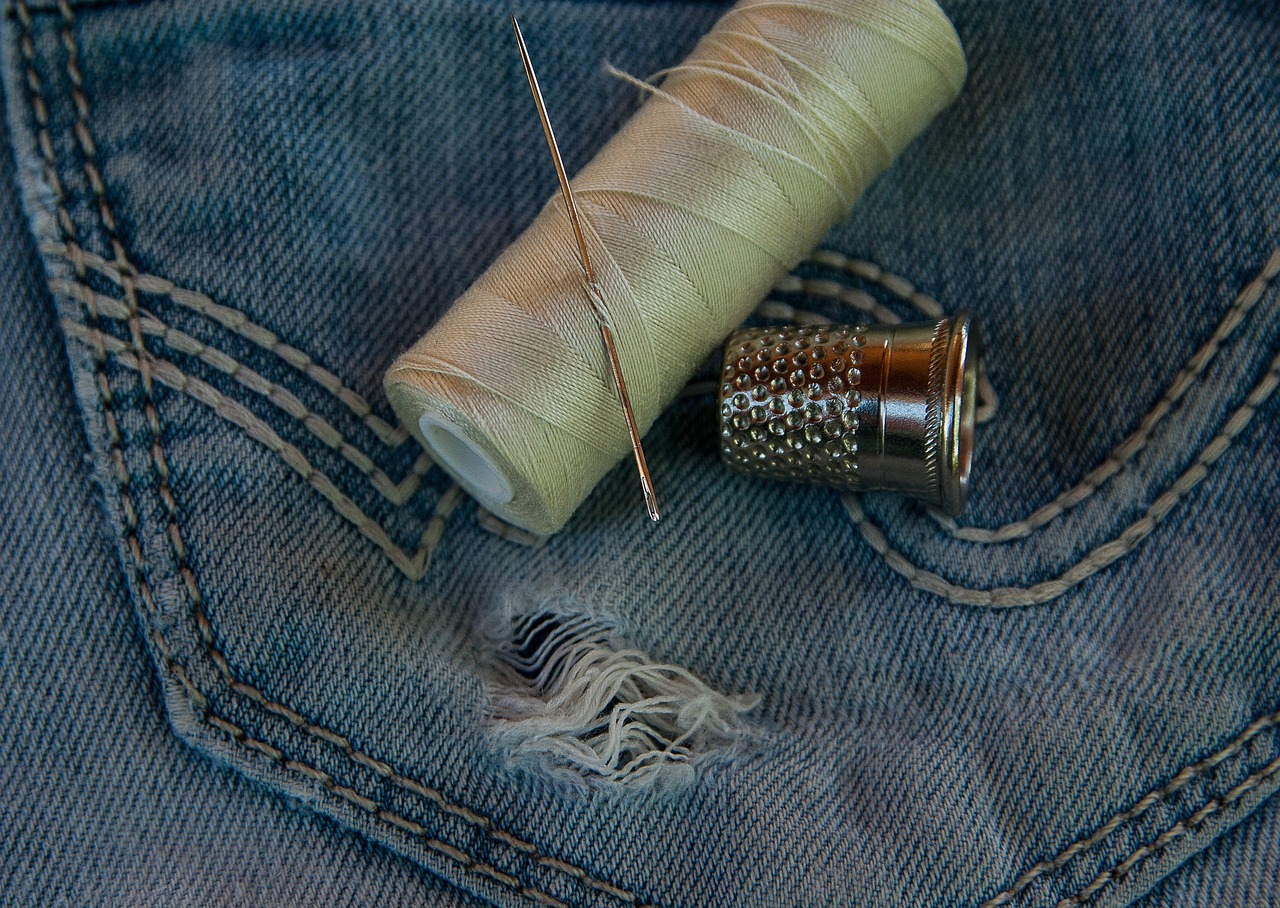
Stretching and Breaks
When you’re immersed in the world of sewing, it’s easy to lose track of time. Hours can slip away as you focus on perfecting that seam or picking the right fabric. However, just like a car needs regular pit stops to keep running smoothly, your body requires stretching and breaks to maintain its performance. Ignoring this crucial aspect can lead to stiffness, discomfort, and even long-term injuries. So, let’s dive into why these pauses are essential and how you can seamlessly incorporate them into your sewing routine.
First off, let’s talk about why breaks are so important. When you sew for extended periods, your muscles can become tense and fatigued. This is especially true for your neck, shoulders, and back, which often bear the brunt of poor posture and repetitive movements. By taking short breaks, you allow your muscles to relax, reducing the risk of strain and enhancing your overall comfort. Think of it as giving your body a little pep talk—it’s a chance to recharge and refocus your energy!
Incorporating stretching into your routine can work wonders. Simple stretches can relieve tension and improve your flexibility, making your sewing sessions not only more comfortable but also more enjoyable. Here are some easy stretches you can do right at your sewing station:
- Neck Rolls: Gently roll your head in a circular motion to ease tension in your neck.
- Shoulder Shrugs: Raise your shoulders towards your ears and then release them down to relieve shoulder tightness.
- Wrist Stretches: Extend one arm forward, palm up, and gently pull back on your fingers with the other hand to stretch your wrist.
These stretches can be done in less than a minute and can significantly improve your comfort level while sewing. But don’t just stop at stretching; scheduling breaks is equally important. A good rule of thumb is to take a break every hour. Use this time to stand up, walk around, and let your body reset. This can help you avoid the dreaded “sewing hunch” and keep your mind fresh and focused.
To make it easier, consider setting a timer on your phone or using a sewing machine with a built-in timer. This way, you’re less likely to get caught up in your project and forget to take those essential breaks. Remember, even a few minutes of downtime can make a world of difference in your overall sewing experience.
In conclusion, integrating stretching and scheduled breaks into your sewing routine is not just a good idea; it’s a necessity for maintaining a healthy posture and ensuring long-term enjoyment of your craft. So, the next time you find yourself lost in the fabric, don’t forget to give your body the care it deserves!
1. How often should I take breaks while sewing?
It’s recommended to take a break every hour. This helps to reduce muscle fatigue and maintain good posture.
2. What are some quick stretches I can do while sewing?
Simple stretches like neck rolls, shoulder shrugs, and wrist stretches can be done in less than a minute and are very effective.
3. Can poor posture while sewing lead to long-term health issues?
Yes, maintaining poor posture can lead to chronic pain and discomfort in the neck, back, and shoulders over time.
4. Should I invest in special furniture for sewing?
An ergonomic chair and a properly sized sewing table can greatly improve your comfort and posture while sewing.
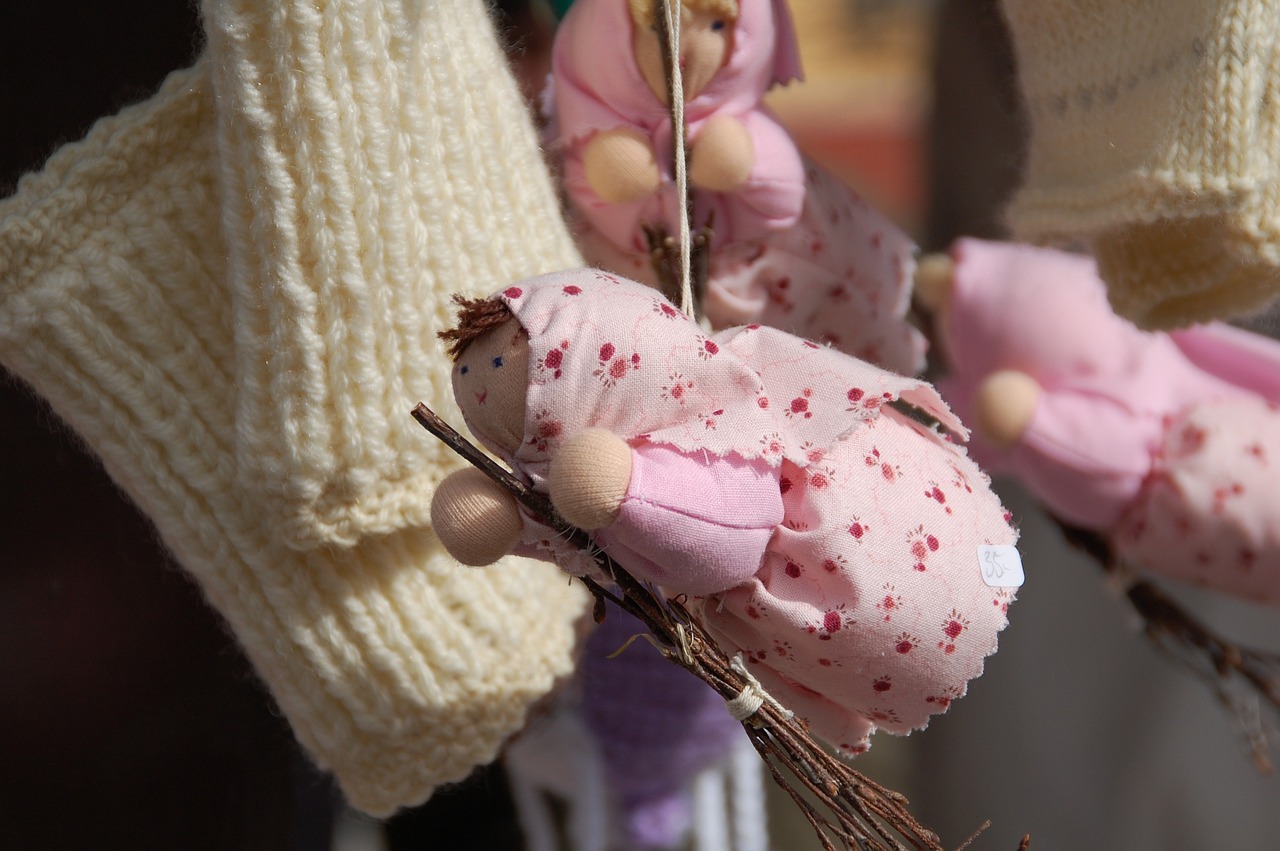
Simple Stretching Exercises
When you're deep into a sewing project, it's easy to lose track of time and forget about your body. However, incorporating into your routine can make a world of difference. Not only do these stretches help relieve tension, but they also keep your muscles flexible and your posture in check. Imagine your body as a well-tuned machine; without regular maintenance, it can start to creak and groan. So, let's explore some effective stretches that you can easily integrate into your sewing breaks!
One of the most effective stretches is the neck stretch. Simply tilt your head to one side, bringing your ear toward your shoulder, and hold for about 15 seconds. Switch sides and repeat. This stretch is essential for counteracting the strain that comes from looking down at your sewing projects for extended periods. Another great stretch is the shoulder roll. Roll your shoulders forward and backward in a circular motion for 10 repetitions each way. This exercise helps to release tension that builds up in your upper body.
Don't forget about your wrists and hands! After all, they’re the stars of the show when you’re sewing. Try the wrist flexor stretch by extending one arm in front of you with your palm facing up. Use your other hand to gently pull back on your fingers, holding the stretch for 15 seconds before switching sides. This stretch not only helps prevent carpal tunnel syndrome but also keeps your hands nimble for those intricate sewing tasks.
Incorporating a bit of movement into your routine can also be beneficial. Consider doing a gentle torso twist while seated. Sit up straight, place your right hand on the back of your chair, and gently twist your torso to the right, holding for a few seconds before returning to the center and switching sides. This exercise promotes spinal mobility and helps counteract the stiffness that can occur from sitting for long periods.
To help you remember these stretches, here’s a quick reference table:
| Stretch | Description | Duration |
|---|---|---|
| Neck Stretch | Tilt your head to one side, hold, then switch. | 15 seconds each side |
| Shoulder Roll | Roll shoulders forward and backward. | 10 repetitions each way |
| Wrist Flexor Stretch | Extend arm, pull back fingers gently. | 15 seconds each side |
| Torso Twist | Twist your torso while seated. | Hold for a few seconds each side |
Incorporating these stretches into your sewing routine can help you feel more comfortable and focused. Remember, taking just a few minutes every hour to stretch can significantly improve your overall sewing experience. So, the next time you find yourself hunched over your sewing machine, take a moment to stand up, stretch, and reset your posture. Your body will thank you for it!
Q: How often should I take breaks while sewing?
A: It's recommended to take a break every hour to stretch and move around. This helps prevent stiffness and maintains good posture.
Q: Can stretching really help with posture?
A: Yes! Stretching helps to release tension in your muscles and improve flexibility, which can lead to better posture while sewing.
Q: What if I forget to stretch?
A: Consider setting a timer or using a reminder app on your phone to prompt you to take breaks and stretch regularly.
Q: Are there specific stretches for beginners?
A: Absolutely! Start with gentle stretches like neck rolls, shoulder rolls, and wrist flexor stretches, which are easy to do and very effective.

Scheduling Breaks
When you're deep into a sewing project, it can be all too easy to lose track of time and forget to take breaks. However, scheduling breaks is not just a good idea—it's essential for maintaining your posture and overall well-being. Think of your sewing session like a marathon, where pacing yourself is crucial to finishing strong. Just as runners need to hydrate and stretch during a race, sewists must also incorporate breaks to refresh both mind and body.
Establishing a break schedule can significantly enhance your sewing experience. Aim to take a short break every hour, even if it’s just for five to ten minutes. During these breaks, step away from your sewing machine, stretch your legs, and give your eyes a rest from focusing on the fabric. This simple act can help prevent stiffness and soreness, allowing you to return to your project with renewed energy and focus.
To help you visualize how to incorporate breaks into your sewing routine, consider the following suggestions:
- Set a Timer: Use a timer on your phone or a kitchen timer to remind you when it's time to take a break. This way, you won't have to keep glancing at the clock.
- Use Breaks for Light Activities: During your breaks, do some light stretches, walk around the room, or even do a few household chores. This keeps your body active and helps you avoid stiffness.
- Hydrate and Snack: Use your breaks to drink water and grab a healthy snack. Staying hydrated and nourished is key to maintaining your energy levels.
Additionally, consider the length of your sewing sessions. If you plan to sew for several hours, it might be helpful to schedule longer breaks every couple of hours. For instance, after two hours of sewing, take a 15-minute break to truly unwind. During this time, you might want to step outside for fresh air, practice some deep breathing exercises, or simply relax your mind with a quick meditation. These longer breaks can help prevent burnout and keep your creativity flowing.
Remember, the goal is not only to complete your sewing project but to enjoy the process without compromising your health. By scheduling regular breaks, you're giving your body the care it needs to thrive, ultimately leading to a more enjoyable and productive sewing experience.
Q: How often should I take breaks while sewing?
A: It's recommended to take a short break every hour and longer breaks every couple of hours, especially during extended sewing sessions.
Q: What are some quick stretches I can do during my breaks?
A: Simple stretches like neck rolls, shoulder shrugs, and wrist stretches can be effective. Standing up to stretch your legs and back is also beneficial.
Q: Can I combine breaks with other activities?
A: Yes! You can use breaks to hydrate, snack, or even do light chores. Just make sure to keep your body moving to prevent stiffness.
Q: How do I remember to take breaks?
A: Setting a timer or using a reminder app on your phone can help you keep track of time and remind you to take breaks.
Frequently Asked Questions
- What is the importance of maintaining good posture while sewing?
Maintaining good posture while sewing is crucial because it helps prevent strain on your back, neck, and shoulders. Good posture ensures that your body is aligned properly, which can reduce discomfort and fatigue during long sewing sessions. Over time, poor posture can lead to chronic pain or musculoskeletal disorders, making it essential to pay attention to your body’s alignment while you sew.
- How can I set up my sewing workspace for better posture?
To create an ergonomic sewing workspace, start by ensuring your table is at the right height—your elbows should be at a 90-degree angle when sewing. Choose a chair that provides good lumbar support and allows you to sit comfortably. Additionally, keep your tools within easy reach to avoid straining your neck or back while reaching for materials. A well-organized space can make a world of difference in your comfort levels.
- What type of chair is best for sewing?
The best chair for sewing is one that offers adjustable features, allowing you to customize the height and angle to fit your body. Look for chairs with good lumbar support and a comfortable seat cushion. A chair with armrests can also help reduce strain on your shoulders. Investing in a quality chair can significantly enhance your overall sewing experience and help maintain good posture.
- Are there any recommended stretching exercises for sewists?
Yes! Simple stretching exercises can greatly benefit sewists. Some effective stretches include neck rolls, shoulder shrugs, and wrist stretches. Incorporating these stretches into your routine can help relieve tension and improve flexibility. Aim to take short breaks every hour to stand up, stretch, and reset your posture, which can help prevent stiffness and discomfort.
- How often should I take breaks while sewing?
It’s recommended to take a break every 30 to 60 minutes during sewing sessions. Use this time to stand up, walk around, and perform some stretching exercises. Scheduling regular breaks helps maintain your focus and reduces the risk of fatigue or discomfort. Remember, your body needs time to rest, especially during long periods of sewing.



















